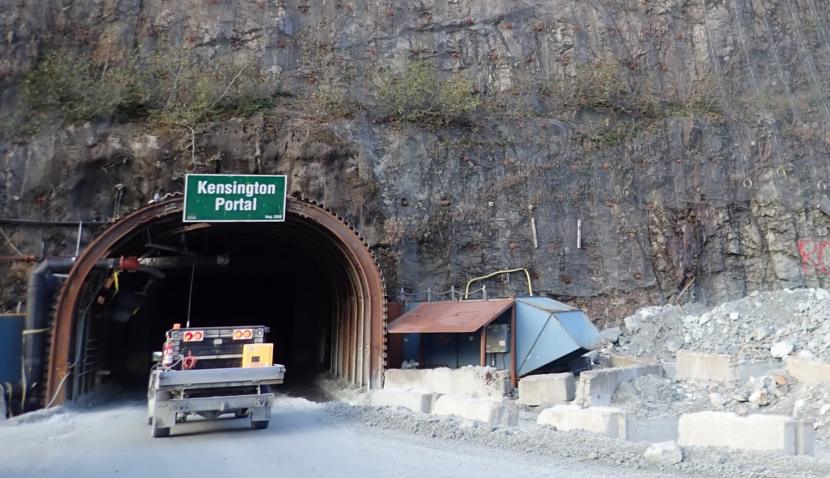Kensington Gold Mine, which operates about 45 miles north of Juneau, has reported a 105,581-gallon spill of mine waste that happened back in late January.
A leak in an underground pipeline that carries mine tailings from the mill to the mine’s tailings storage pond released a mixture of water and ground up rock that contained small concentrations of heavy metals. Some of that slurry reached the nearby Johnson Creek, which empties into Berners Bay.
According to an incident report from the mine’s parent company, Coeur Alaska, the spilled tailings “pose no long-term impacts to Johnson Creek.”
A loss of pressure in the pipe alerted a mine employee of the spill, which came from a small hole that formed in a section of the pipe near the mill. The spill lasted nearly 24 hours, but according to Coeur’s report it only came into contact with Johnson Creek for just under three hours.
Samples taken from the creek by mine staff just after the spill began showed levels of aluminum, cadmium, copper, iron and lead that exceeded state water quality standards, as well as cloudy water and elevated acidity. But follow-up samples taken the next day and a week later showed that the contamination had been diluted to acceptable levels.
Testing by the Alaska Department of Fish and Game also found that metals in the creek bed sediment did not exceed baseline concentrations.
Portions of Johnson Creek downstream from the mine are spawning grounds for salmon. Berners Bay is an important subsistence fishery and is considered an essential fish habitat for many species of ground fish under federal law.
According to Coeur’s report, the spill did not touch the creek’s lower reaches. But the National Atmospheric and Oceanic Administration has called for an additional assessment to ensure that the spill has not negatively impacted those fisheries.
The report states that crews at Kensington Mine were able to remove about half of the spilled tailings from a nearby road and from areas around the creek. Cleanup efforts to remove more tailings from the creek’s margins will resume this spring as snow and ice recede.
The Alaska Department of Environmental Conservation will compare the cleanup efforts detailed in Coeur’s report against state standards.
“We’re going to review this report, and then look at it and identify any gaps in information that we want to hear more on from Coeur,” said Rachael Krajewski, coordinator of spill prevention, preparedness and response for the Southeast region. “We’re not walking away from this until we are confident that cleanup has been done to state standards.”
Krajewski said the state will likely require additional water quality sampling.
In 2019, the mine incurred more than half a million dollars in fines from the Environmental Protection Agency for discharge violations.
Coeur Alaska declined KTOO’s request for additional comment. According to its report, the section of the pipeline that leaked has been replaced.
It also says the mine plans to conduct a full inspection of the rest of the pipeline later this year, and implement new training protocols and monitoring technology to catch future leaks faster.






